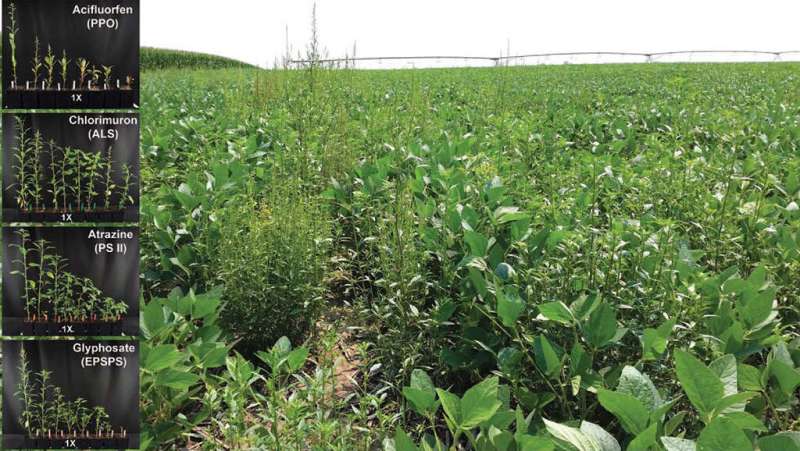Researchers find waterhemp has evolved resistance to four herbicide sites of action

A research study featured in the journal Weed Science provides worrisome new details about the evolution of herbicide resistance in waterhemp—an annual weed that represents a significant threat to Midwest corn and soybean crops.
When a waterhemp biotype in eastern Nebraska survived a post-emergent application of the PPO inhibitor fomesafen, a team of university scientists decided to take a close look. They discovered the population was resistant to four distinct herbicide sites of action, including PPO inhibitors, ALS inhibitors, EPSPS inhibitors and PS II inhibitors.
Among their findings:
- All samples of the resistant waterhemp biotype tested positive for a G210 mutation in the PPX2L gene.
- The population exhibited a four- to six-fold resistance to PPO-inhibiting herbicides, a three-fold resistance to EPSPS inhibitors (glyphosate) and a seven-fold resistance to atrazine (a PS II inhibitor).
- When the ALS inhibitors chlorimuron and imazethapyr were applied at 32 times the label application rate, they achieved a less than 80 percent reduction in the aboveground biomass of the resistant waterhemp biotype.
"Our study showed there simply are no effective post-emergent herbicide choices for the control of resistant waterhemp in either glyphosate-resistant or conventional crops," said Debalin Sarangi, a postdoctoral researcher at the University of Nebraska-Lincoln. "Growers will need to diversify their approaches to weed management and complement the use of chemicals with cultural and mechanical controls."
More information: Debalin Sarangi et al, Protoporphyrinogen oxidase (PPO) inhibitor–resistant waterhemp (Amaranthus tuberculatus) from Nebraska is multiple herbicide resistant: confirmation, mechanism of resistance, and management, Weed Science (2019).
Provided by Cambridge University Press


















